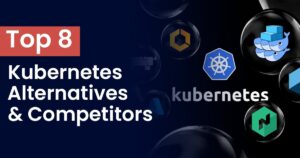
Top 8 Kubernetes Alternatives & Competitors
Introduction The way we manage container orchestration has been entirely transformed by Kubernetes, which has made application deployment, scaling, and management much more accessible. It’s
Unlock the Power of FortiGate Mastery with Our Latest Release Fortinet Certified Associate – FortiGate Operator Course. Enroll Now!

Introduction The way we manage container orchestration has been entirely transformed by Kubernetes, which has made application deployment, scaling, and management much more accessible. It’s

Introduction In the ever-evolving landscape of cloud computing, two prominent paradigms have emerged to revolutionize the way applications are deployed and managed: Function as a

Introduction In today’s data-driven world, businesses are constantly seeking tools that can help them make sense of the vast amounts of information at their disposal.
Table of Contents
CISO Job Functions
A chief information security officer (CISO) is the senior-level executive within an organization responsible for establishing and maintaining the enterprise vision, strategy, and program to ensure information assets and technologies are adequately protected. [Wikipedia].
CISO is a key position in an organization and reports directly to either CIO or CEO. What are the primary job responsibilities of a CISO? Below mind map gives a holistic view of the different job responsibilities CISO role should cover.
Detection
Prevention
Incident Management
Above pointers can be used by CIO’s/IS Managers for planning & tracking overall security needs of an organization.
© 2022 All rights reserved | Privacy Policy | Terms and Conditions | Sitemap




